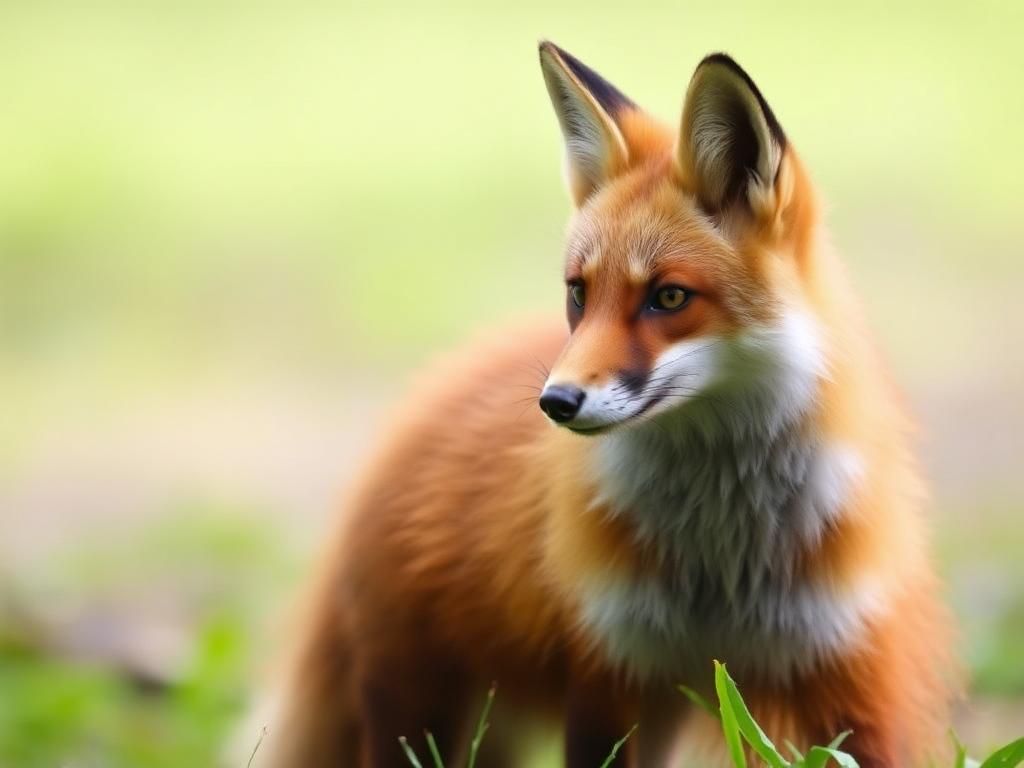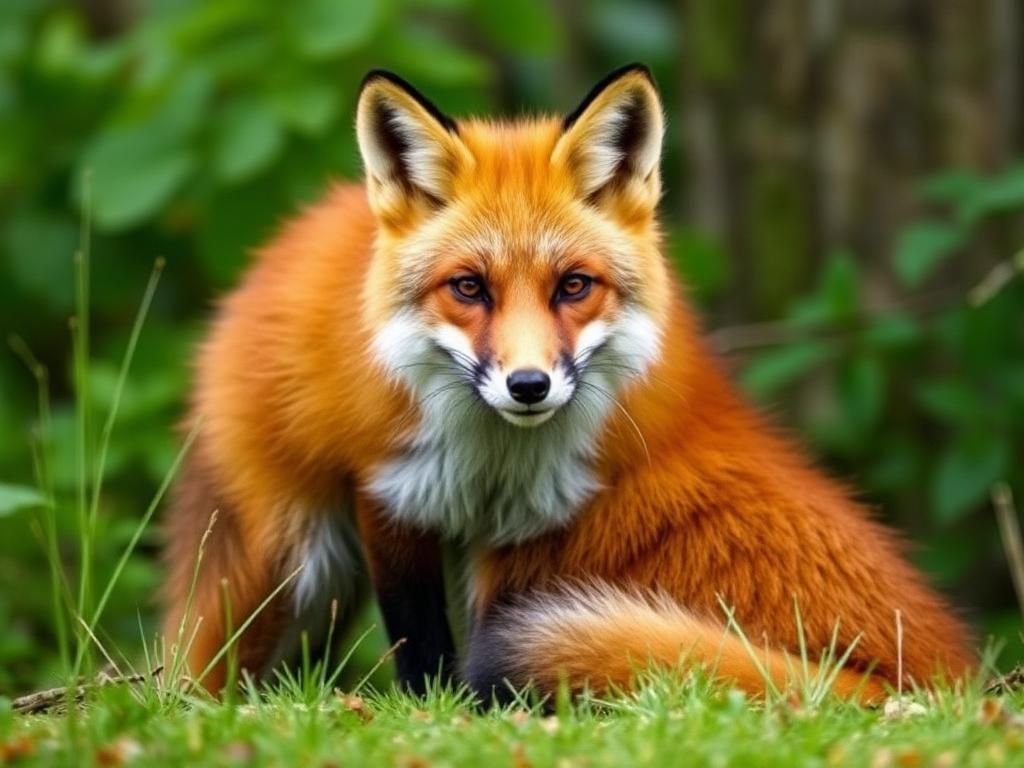The fox is not just a charming creature found in many forests; it holds profound meaning in cultures around the world. Common species such as the red fox, Arctic fox, and fennec fox exhibit remarkable characteristics that intrigue animal lovers and scholars alike. These small to medium-sized mammals are known for their keen intelligence, agility, and social structures. Their ability to adapt to urban areas showcases their cunning nature, which has sparked significant cultural interest. The purpose of this article is to delve into the fox animal meaning across various contexts, exploring its symbolic significance from biological, cultural, and philosophical perspectives.
Biological and Behavioral Characteristics of Foxes
Basic Description
Physically, foxes typically range from about 18 to 35 inches in length, not including a tail that can add another 12 to 18 inches. Their fur color varies by species, including striking reds, browns, and white shades. Most notable are their bushy tails, pointed ears, and clever, expressive faces. Features like these contribute to their adaptability in different environments.
Habitat and Distribution
Foxes thrive in various natural habitats, from dense forests to open grasslands and even urban areas. Their geographic distribution spans continents, including North America, Europe, Asia, and parts of Africa. The adaptability of the fox to diverse habitats has allowed it to prosper in settings often inhospitable to other wildlife.
Behavioral Traits
Foxes are mostly social animals that live in family groups called “leashes,” which usually consist of a mated pair and their offspring. They possess a complex social structure where hierarchy can often dictate roles within the family unit. In terms of hunting and feeding, foxes are opportunistic feeders, which means they consume a wide variety of prey from small mammals, birds, and insects to fruits and vegetables, showcasing their resourcefulness.
Symbolism of Foxes in Various Cultures
Ancient Cultures
In many ancient cultures, the fox was often depicted in mythology and folklore. In Mesopotamia, foxes represented cunning and trickery. Greek mythology tells stories of the fox as a clever creature, while Roman culture considered it an embodiment of adaptability. The fox commonly emerges as a trickster figure in numerous tales, imparting moral lessons about wisdom and carefulness.
Native American Perspectives
Native American tribes attribute various symbolic meanings to foxes. The fox signifies wisdom, adaptability, and cunning, often associated with survival and cleverness. Specific narratives highlight the fox’s role in nature, teaching that adaptability is essential for success and survival. For example, in some cultures, the fox is a guide who helps navigate through challenges of life.
Asian Symbolism
In Asian cultures, particularly in China, the fox (or huli jing) embodies complex meanings. It can symbolize a trickster spirit or even a magical being with the power to transform. Similarly, in Japanese folklore, the kitsune is revered as a creature of great wisdom and magical capabilities, acting both as a guardian and a harbinger of misfortune, depending on the tale.
Modern Interpretations

In contemporary society, the fox animal meaning has taken on diverse interpretations. The fox has become a symbol in literature, film, and art, often representing cleverness and adaptability. Its urban adaptation suggests a commentary on resilience and intelligence when faced with change.
Philosophical and Psychological Meanings of the Fox
Association with Cunning and Intelligence
The fox often serves as an archetype in psychological contexts. It represents cunning and strategic thinking, encouraging humans to embrace these qualities in their lives. In dreams, the fox can appear as an indication of one’s inner wisdom or need for cleverness in navigating through life’s challenges.
Representations of Change and Adaptability
The fox symbolizes change, demonstrating how adaptability is essential for survival. It serves as a reminder that being flexible and resourceful can help us navigate through uncertain times. Those who embody the qualities of the fox may find themselves better equipped to handle the twists and turns that life presents.
Foxes in Literature and Media
Classic Literature
Notable works of classic literature feature foxes as central figures. For instance, “The Tale of Mr. Tod” by Beatrix Potter presents a cunning and intelligent fox in a charming narrative. Similarly, “The Fox” by D.H. Lawrence explores deeper themes surrounding nature and human relationships with wildlife.
Modern Pop Culture
In modern media, foxes continue to captivate audiences. Disney’s “Zootopia” portrays a clever fox navigating a world filled with prejudice and assumptions. “Fantastic Mr. Fox,” based on Roald Dahl’s children’s book, brings to life the sly and clever characteristics of the fox. Their presence in popular culture reinforces the fox animal meaning as symbols of both cleverness and adaptability.
Conservation and Ecological Significance of Foxes
Role in the Ecosystem
Foxes play a crucial role in maintaining ecological balance. As both predator and prey, they help regulate populations of small mammals and insects, contributing to biodiversity. Their actions can impact the health of ecosystems, illustrating the importance of preserving this species within its natural habitats.
Conservation Status

Despite their adaptability, fox populations face threats such as habitat loss, hunting, and climate change. Conservation efforts are underway to protect these vital creatures and their environments. Various organizations advocate for wildlife preservation and promote public awareness regarding the importance of foxes in our ecosystem.
Conclusion
The fox animal meaning spans a multitude of contexts, from ancient symbolism to modern interpretations and ecological significance. As we reflect on the enduring role of foxes in culture and nature, it is imperative to recognize their value and advocate for wildlife conservation. By respecting these creatures and their habitats, we ensure that their rich significance continues for generations to come.
Further Reading and Resources
For those interested in delving deeper into the world of foxes and their meanings, consider exploring these resources:
– **Books**: “The Fox and the Grapes” for a lighter read and “Foxes: A Wildlife Handbook” for in-depth scientific knowledge.
– **Websites**: [National Geographic’s Fox Page](https://www.nationalgeographic.com/animals/mammals/facts/red-fox) offers insights into fox behavior and habitats.
| Cultural Interpretation | Symbolism | Example |
|---|---|---|
| Ancient Cultures | Cunning and trickery | Fox in Greek myth |
| Native American | Wisdom and adaptability | Fox as a guide |
| Chinese Culture | Magical transformation | Huli Jing |
| Japanese Folklore | Guardian and trickster | Kitsune tales |
| Modern Society | Resilience and cleverness | Fox in Zootopia |
Frequently Asked Questions
1. What does the fox symbolize in different cultures?
The fox symbolizes adaptability, cunning, and wisdom in various cultures, often portrayed as a trickster or a guide.
2. Are foxes social animals?
Yes, foxes live in family groups called leashes and exhibit complex social structures.
3. How do foxes adapt to urban environments?
Foxes are opportunistic feeders and can thrive in urban settings by adapting their diet and behaviors.
4. What role do foxes play in the ecosystem?
Foxes help control small mammal populations and contribute to ecological balance.
5. Are fox populations endangered?
While some species face threats, others remain stable; habitat loss and hunting are primary concerns for their conservation.
6. How is the fox viewed in folklore?
The fox often represents cleverness and strategical thinking in folklore, with many cultures incorporating it into moral lessons.
7. Can foxes symbolize change?
Yes, foxes often embody change and adaptability, serving as reminders of resilience in the face of challenges.
8. What is a common depiction of foxes in literature?
Foxes often serve as central characters in narratives highlighting themes of cleverness, survival, and wit.
9. How can we help conserve foxes?
Supporting wildlife conservation initiatives and educating others about the importance of foxes can help protect their habitats.
10. What impact do foxes have on biodiversity?
As predators, foxes help regulate prey populations, playing a crucial role in maintaining ecological diversity.
